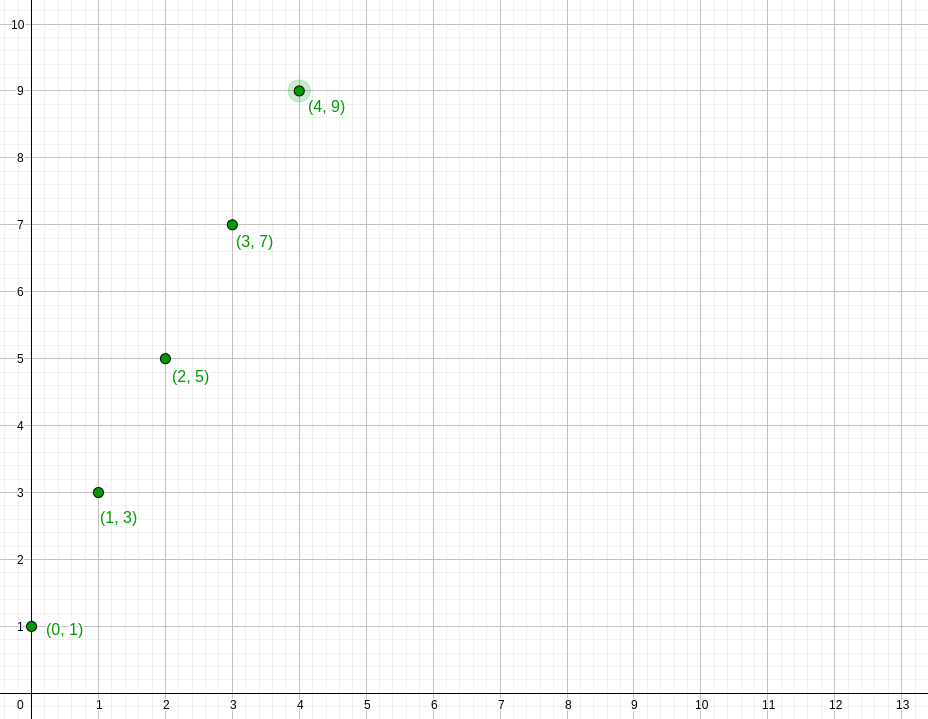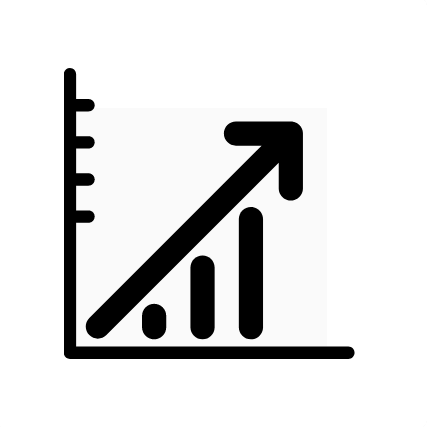Quick Access
Introduction
Sequences pose a lot more problems for high school students than functions ... and yet their concepts are not that far apart. In this first article, you will find the essential concepts necessary to understand the study of sequences. Arithmetic sequences and geometric sequences will then be easily understood.
So, what is a sequence?
In short, it's like a function but would only be defined for positive integers. That is, there would only be \(f(0), f(1), f(2), f(3)\)… and we chose to write them \(U_{0}, U_{1}, U_{2}, U_{3}\)…
Take for example a sequence defined by \(U_{n} = 2n + 1\).
With a function we would have written \(f(x) = 2x + 1\).
To calculate the terms, it is therefore sufficient to replace n by its value
in the equation as for a classical function:
$$U_{0} = 2 * 0 + 1 = 1$$ $$U_{1} = 2 * 1 + 1 = 3$$ $$U_{2} = 2 * 2 + 1 = 5$$ $$U_{3} = 2 * 3 + 1 = 7$$ $$...$$
Intuitively, a sequence can also be considered as a simple ordered list of numbers. The previous sequence could be defined with the list { 1, 3, 5, 7, ... }.
This is what a sequence is, nothing else. It really is that simple; everything else is just mathematical writing to make it easier to handle.
Note:
n is always positive !
Sometimes sequences don't start at 0.
For example we can define a sequence "for all n ≥ 3".
\( U_{0} \), \( U_{1} \) et \( U_{2} \) don't exist in that case;
we calculate the terms starting with \( U_{3} \).
Examples of uses in life
- Know how much money we can save with a regular pay (arithmetic sequence).
- Bank loans are modeled with geometric sequences; understanding them will prevent you from being fooled by your banker ;)
- Predict the evolution of an epidemic within a population.
- Understand prime numbers and their distribution to make crypto, hacking or just math ^^.
- Predict the evolution of populations of animals or humans. For example, the total number of rabbits that a single pair of rabbits can generate in a few months (Fibonacci sequence).
- Find the approximate value of certain functions (essential for numerical computing) or numbers like π.
Graphic Representation
The graphic representation of a sequence \( U \) is the set of coordinate points \( \{ n; U_{n} \} \) where n describes the natural numbers for which \( U_ {n} \) is defined.
We proceed as for functions { x, y = f(x) }; with the only difference that the sequence is represented by points, since the sequence is only defined for 0, 1, 2, 3…
Example
Let us resume our sequence defined by \(U_{n} = 2n + 1\).
We put the terms previously calculated in a table:
| n | 0 | 1 | 2 | 3 | 4 |
|---|---|---|---|---|---|
| \( U_{n} \) | 1 | 3 | 5 | 7 | 9 |
And we get the graphic representation of the first points of the sequence:

How to define a sequence
Definitions
A sequence \( U \) associates with any natural number \( n \)
a real number \( U_ {n} \).
The real numbers \( U_ {n} \) are the terms of the sequence.
The associated integers \( n \) are the indexes.
The sequence \( U \) can also be written \( U_{n} \) ou \( U_{n_{n \in \mathbb{N}}} \)
Then you should know that there are 2 ways to describe a sequence. It is important to understand them both as we will often have to manipulate them or have to switch from one to the other.
Explicite Formula
The explicit form is like that of a classic function, it gives us \( U_ {n} \) as a function of \( n \):
$$U_{n} = f(n)$$ where f is a function defined in \(\mathbb{N}\)
This allows to directly calculate any terms of the sequence, without knowing the previous term (we simply replace n in the formula). We will often have to find this form from that of recurrence.
Example
Our sequence that follows us from the beginning is defined by \(U_{n} = 2n + 1\).
This is the explicit form and if we want to calculate \(U_{30}\):
$$ U_{30} = 2*30 + 1 = 61$$
Recursive Formula
If we go back a bit to the graph and the first terms of our sequence, we realize that we only need to add 2 each time we want to move from one point to another. As a reminder:
$$U_{0} = 1$$ $$U_{1} = 3$$ $$U_{2} = 5$$ $$U_{3} = 7$$ $$...$$
To mathematically express this relation between a term and its next, just write the initial term and the formula that links two consecutive terms.
Example
Still with our sequeence { 1, 3, 5, 7, ... }:
$$U_{0} = 1$$
$$U_{n+1} = U_{n} + 2$$
With this notations, we can easily see the relation between a state (term) and the following one: this is what is called the recurrence relation (as in computer science) and most of the sequences are defined this way.
Note:
To calculate \(U_{4}\), we use "n = 3" as "n + 1" should be equal to 4.
$$U_{4} = U_{3+1} = U_{3} + 2 = 9$$
But, how do we calculate \( U_ {30} \) with this formula?
We simply replace in the formula:
\(U_{30} = U_{29} + 2\) (...but we need \(U_{29}\)!)
\(U_{29} = U_{28} + 2\) (...but we need \(U_{28}\)!)
\(U_{28} = U_{27} + 2\) (...but we need \(U_{27}\)!)
...
\(U_{1} = U_{0} + 2\) Ah!
Uh ... it's not too practical ...
For this specific operation, it is not practical and the challenge will often be to find the general formula from the recurrence formula.
This is most often what is done when modeling a phenomenon (e.g. meteo):
- From point measurements, we look for what changes between two states (recurrence).
- Then we deduce a model which more generally describes its (explicit) evolution.
But the explicit formula will also remain extremely useful for many things that we will see later ;)
The trap to avoid
Differentiate between the index n and the value of n in the formula!
This is the most common mistake (and by far in the lead).
The index / value distinction is really the most important thing to not get lost.
When n is used as an index,
it is always "stuck" to the letter which represents the sequence.
For example when we write \( U_ {n} \) or \( U_ {n + 1} \).
And in this case, we cannot move it: it represents the rank of the term of the sequence.
In all other cases it is used as the value.
It is then exactly like the x that we are used to manipulate in equations.
Example
Let us take a sequence defined by the recurrence relation:
$$\color{blue}{U_{n+1}} = \color{green}{n} * \color{blue}{U_{n}} + 2\color{green}{n}$$
Within \(\color{blue}{U_{n+1}}\) and \(\color{blue}{U_{n}}\), n is the index.
Elsewhere n is a value.
Here, we may rewrite the equation as: $$ \color{blue}{U_{n+1}} = \color{green}{n} * ( \color{blue}{U_{n}} + 2) $$
Summary sheet
The real numbers \( U_ {n} \) are the terms of the sequence.
The associated integers \( n \) are the indexes.
Explicite Formula: as a classic function. $$U_{n} = f(n)$$ where f is a function defined in \(\mathbb{N}\)
Recursive Formula: the initial term and the formula that links two consecutive terms. $$U_{0} = C^{ste}$$ $$U_{n+1} = f(U_{n})$$
Differentiate between the index n and the value of n in the formula!
To calculate \( U_{n} \), we use the index (n - 1).
$$U_{4} = U_{3 + 1}$$
And There you go ! We now have everything we need to understand more practical cases such as arithmetic and geometric sequences. We can also see more general notions like the direction of variation, convergence and limits.
(Back to Top)

 Direction of variation - Monotony
Direction of variation - Monotony
 Arithmetic Sequences
Arithmetic Sequences